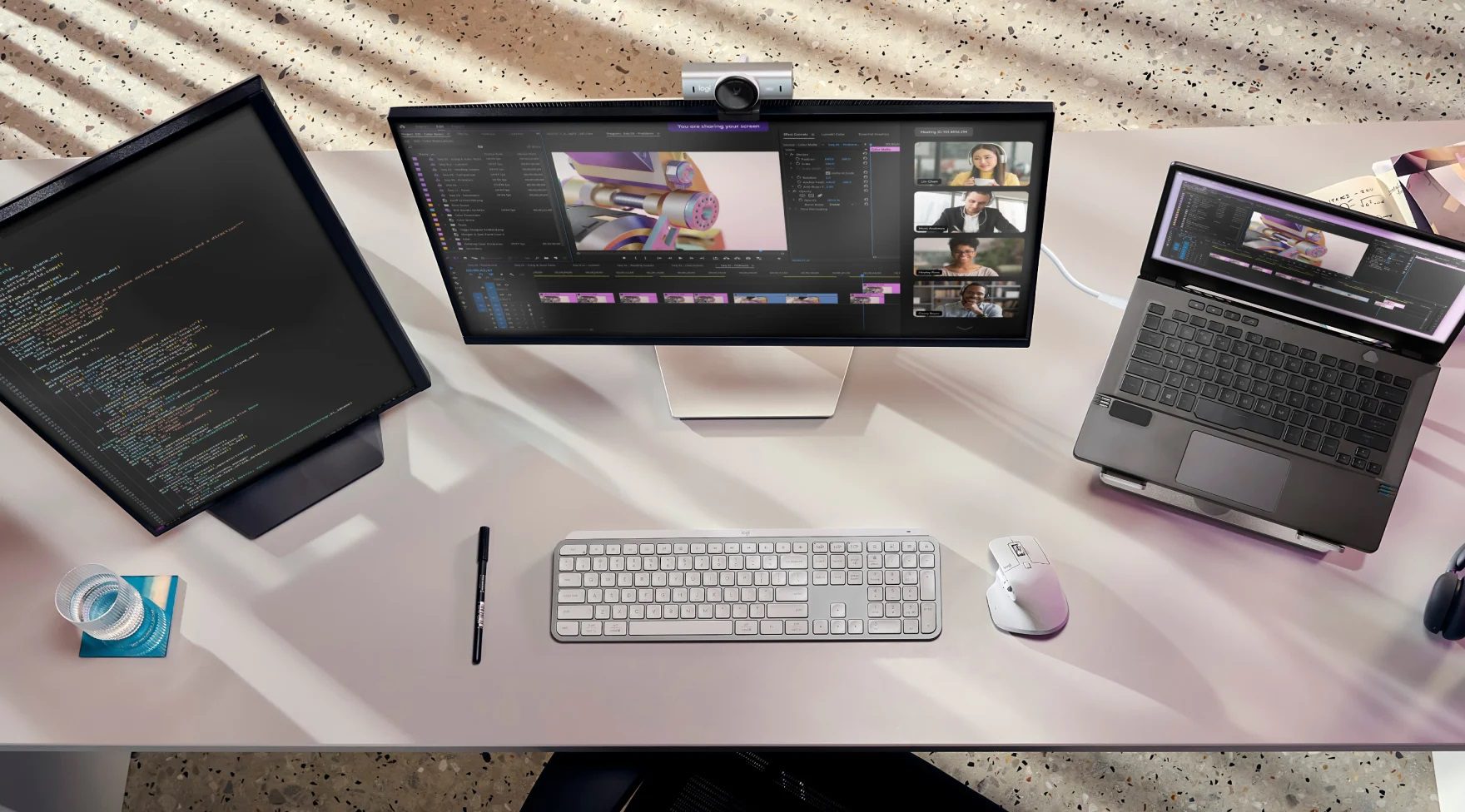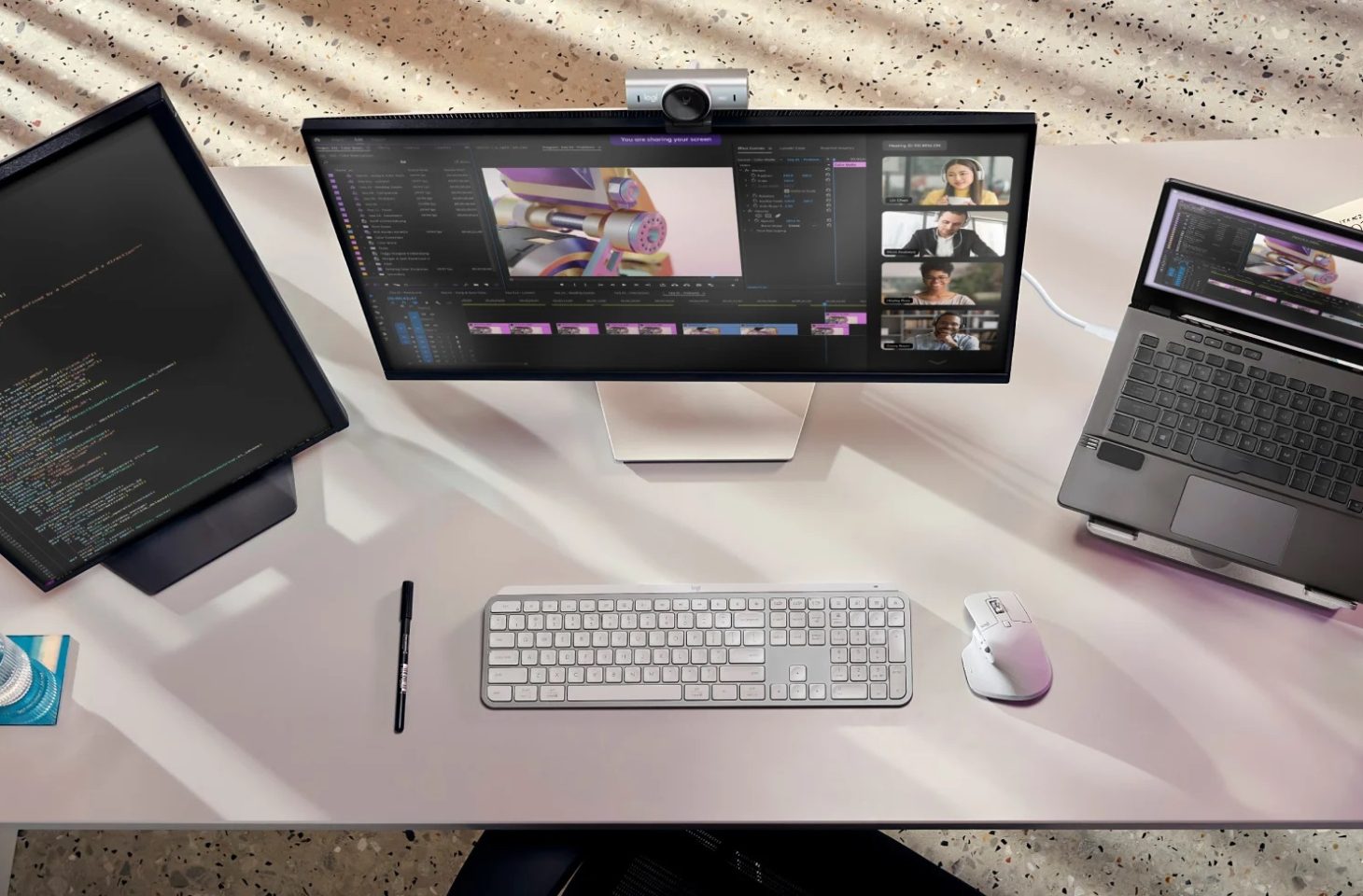Logitech MX Brio webcam test: light in the darkness
- April 30, 2024
- 0
Logitech is launching its own “most advanced” webcam ever with the MX Brio. Sometimes the webcam doesn’t keep all the promises made. Logitech has been a reference when
Logitech is launching its own “most advanced” webcam ever with the MX Brio. Sometimes the webcam doesn’t keep all the promises made. Logitech has been a reference when


Logitech is launching its own “most advanced” webcam ever with the MX Brio. Sometimes the webcam doesn’t keep all the promises made.
Logitech has been a reference when it comes to webcams for many years. Since the video meeting boom during the Corona pandemic, the range of high-quality, professional webcams has exploded. With its latest version, the MX Brio, Logitech wants to show off as usual and with an acronym that everyone wants to hear today: AI.
Logitech’s ambitions with the MX Brio webcam are high. The product must be for everyone and appeal not only to business professionals but also to streamers and private individuals. Does the webcam keep all of its wonderful promises?
The webcam is designed to be barely noticeable on your desk. No crazy colors, just gray or slightly darker gray aluminum for a business look. Without the base, the webcam measures 38 mm x 45 mm x 20 mm. The webcam can be easily pushed into the base with a magnet and an adhesive pad ensures a stable hold on the back of a monitor or laptop.

If you don’t want to use the webcam, you can rotate the lens to close the “curtain”. We’re seeing this feature more and more often on professional webcams. Logitech does not provide a cover for the lens to protect the webcam from possible damage while on the go.
The Logitech MX Brio shows the words on the camera Ultra wide 4K. The 8.5MP sensor contains larger pixels to capture more light, which is said to provide better natural lighting. Logitech has a few other tricks up its sleeve for this. With the basic settings you get realistic sharpness, clarity and color balance. The camera has a ninety degree viewing angle, which you can vary between 65° and 78°.
It’s tempting for manufacturers to forego 4K picture quality when making announcements, but that number means little for video conferencing. After all, the major video conferencing platforms don’t yet go beyond 1080p. Only professional video makers benefit from the maximum resolution.
If 4K isn’t enough, Logitech throws in another two-letter word: AI. The presence of algorithms in webcams is nothing new and do not be fooled into thinking so. Additionally, you will only have access to as many AI-powered imaging features as are supported by the software application you use for video conferencing.
The added value of AI lies in light correction in challenging lighting conditions. This works in both directions: the webcam can compensate for both a lack of natural light and bright backlighting. You will notice little to no difference in picture quality when dialed in with the curtains open (left photo) or closed (right photo), unless closed curtains would make the room pitch black. The correction is not excessive, so the image still looks realistic.


A picture without sound is never pleasant, which is why the Logitech MX Brio has a built-in microphone. This also includes a touch of AI: the microphone is equipped with it Beam shapingTechnology that creates an invisible “sound well” around you. Sounds that are outside the channel should be filtered out of the outgoing audio. In the audio clips below, you can hear how the Logitech MX Brio sounds compared to the microphone on an average business laptop.
Fragment 1 (Logitech MX Brio):
Fragment 2 (laptop):
The webcam is available in different versions for the private and professional market. The hardware is identical and the only difference is the supporting software: for business users it is the LogiTune app. The software allows you to adjust some image settings such as saturation or contrast and activate additional functionalities. For example, autofocus is only available with LogiTune.

The additional features that this webcam supports are rather limited. In our opinion, Logitech is completely wrong in ignoring Windows Hello. The webcam does not contain an infrared sensor, so you cannot use it to register using facial recognition. Biometric identification is becoming increasingly popular and it’s strange that Logitech doesn’t address it with this device, especially considering that the Brio webcam, which is six years older, supports it.
Logitech wants to be very innovative with one feature: Show Mode. This feature allows you to tilt your webcam 90 degrees to frame an object on your desk, such as a notepad. This feature is not available for various reasons. First, it takes a lot Trial and error to tilt your webcam downward without knocking it off your desk.

Secondly, the image is much blurrier or the camera doesn’t seem to know exactly what you want to focus on. Show mode is a nice experiment, but still needs refinement.
Logitech wanted to present the new MX Brio and they succeeded. There are only a few webcams that can deliver such a sharp image in difficult lighting conditions. This webcam will appeal to a wide audience, from experienced video conference participants to professional video makers.
Logitech just has to be careful not to promise too much. The MX Brio webcam has to be able to do a lot and sometimes can’t do it. The best example is Show Mode: a feature that Logitech wanted to be very creative with, but is primarily for show.
The Logitech MX Brio is available in light gray or dark gray from 229 euros (plus VAT). Logitech offers a two-year warranty.
Source: IT Daily
As an experienced journalist and author, Mary has been reporting on the latest news and trends for over 5 years. With a passion for uncovering the stories behind the headlines, Mary has earned a reputation as a trusted voice in the world of journalism. Her writing style is insightful, engaging and thought-provoking, as she takes a deep dive into the most pressing issues of our time.